The problem with clicking in East London is that there is just way too much to capture. The signs of decay, the thin, broken layers of regeneration and gentrification, the ethnic veneer, the street art, the life of the people - there is a whole lot to East London and it is a whole lot different from the rest of the city.
It is Another London, an alternate London. And there is no another in the East End like Brick Lane.
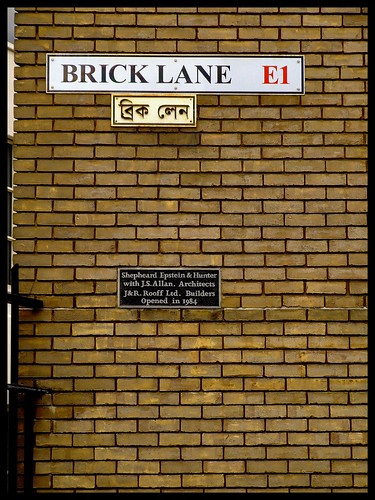

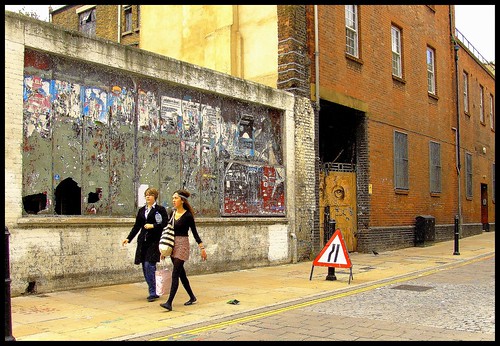
It is Another London, an alternate London. And there is no another in the East End like Brick Lane.


Brick Lane is London's Bangla Town - the first home of early 20th Century Bangladeshi refugees in the UK. It is also the erstwhile home of Jack The Ripper, which should tell you about the area's horrific and less than glorious history. It has been the home of wave after wave of immigrants since the 17th Century - the Huguenots, the Jews and the most recent - Bangladeshis. It is after the arrival of the Bangladeshis that there was a revival of Anglo-Indian cuisine in this part of London, a revival that lives on in the several cheap curry houses that the street is now famous for.
And there's more apart from the curry. Some immigrants have launched other businesses and these tend to be clustered on certain patches of the street or on other streets that shoot off the main artery. It is also the setting for Monica Ali's Brick Lane, for Salman Rushdie's The Satanic Verses (in part), On Brick Lane by Rachel Lichtenstein, Salaam Brick Lane by Tarquin Hall, among others.



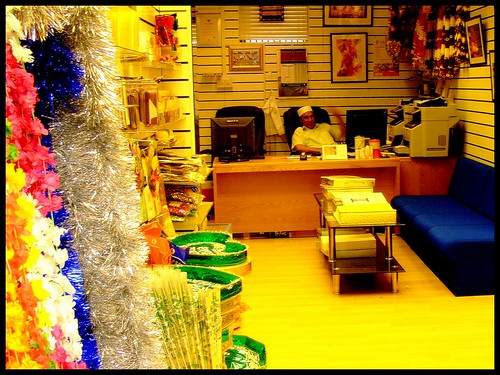

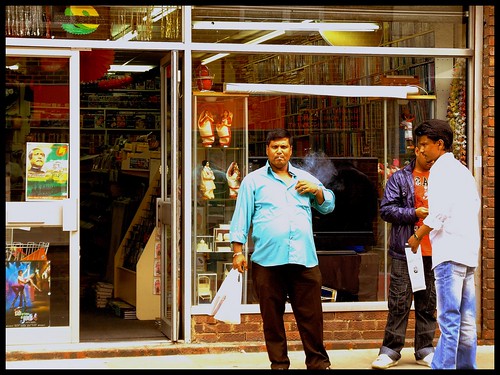
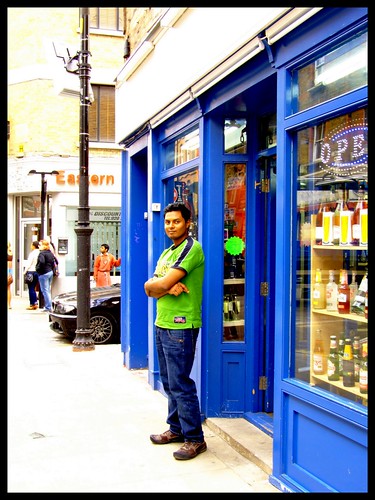

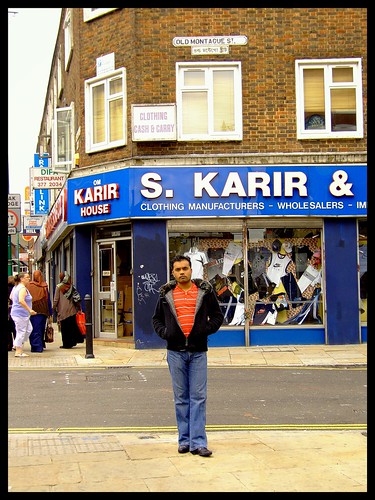
And then you see a couple of fashion students walk past and you remember you're still in London.
And there's more apart from the curry. Some immigrants have launched other businesses and these tend to be clustered on certain patches of the street or on other streets that shoot off the main artery. It is also the setting for Monica Ali's Brick Lane, for Salman Rushdie's The Satanic Verses (in part), On Brick Lane by Rachel Lichtenstein, Salaam Brick Lane by Tarquin Hall, among others.





And it is not surprising to see why there' s so much contemporary literary interest in this place. For, it is all a little bit surreal: You see Bangladeshi people all around you. The road signs are in English and Bangla. Skull caps, sarees, hijabs, sherwanis and salwar kameez make up the predominant dress code. You stand out in your jeans and bare arms, because you have a south asian face. Shops sell Indian wedding paraphernalia and metres of embroidered cloth. Curry houses blare loud bangladeshi or hindi film music. You can smell curry and spices and marinating meat. As a lone south asian woman with a camera, you attract a lot of male attention - but the camera instils some sort of automatic respect for you in the men. The women cover their faces as they pass by you - they do not want to be clicked. Some older men look disapprovingly at you, but besides themselves with curiousity, keep watching from a distance.

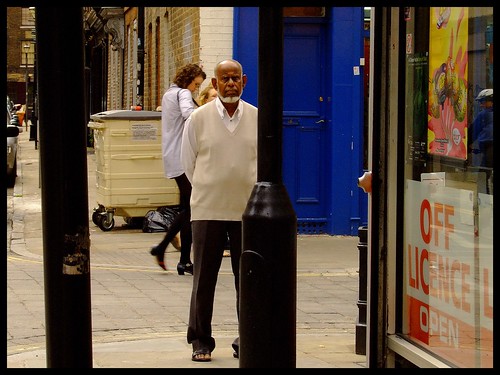
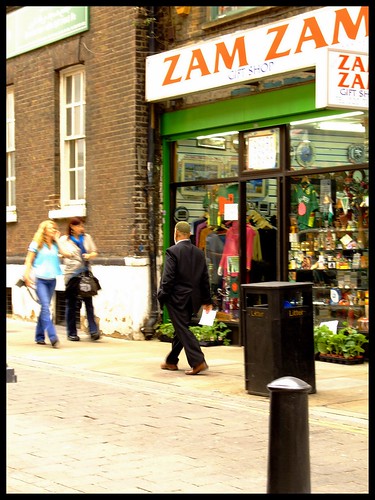
This gentleman stood around giving me a disapproving look but the moment he realised my camera was on him, he walked away!
Some younger ones deliberately saunter into your frame. And a few even oblige you with poses - poses you didn't ask for.



This gentleman stood around giving me a disapproving look but the moment he realised my camera was on him, he walked away!
Some younger ones deliberately saunter into your frame. And a few even oblige you with poses - poses you didn't ask for.




Except for this gentleman who politely asked if I would click a picture of him. When I agreed, he happily struck this pose in front of his shop. Then he gushingly told me no one had clicked a picture of him in a very long time. I offered to email him his picture. Besides himself with happiness, he scrawled out his email id on a piece of paper and asked me about five times "Really? You're serious? You will really email my photo to me?!" (I just emailed it to him, if you're wondering).
And then you see a couple of fashion students walk past and you remember you're still in London.

But that is not all there is to Brick Lane. Watch out for more in the next...



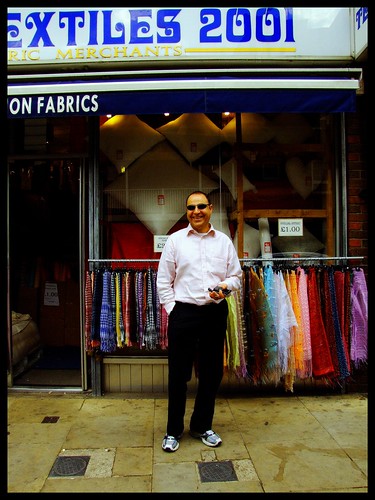




6 comments so far:
That's a nice series of what is a very familiar area to me. I was last there in May 2008 but I don't remember all the street art which you've captured so well. I think I've been to most of the restaurants on that road (and some on the side roads too). Isn't there a an art gallery further down as well, beyond the Truman building? I'm sure I've been to an exhibition there some while ago.
Beautiful report. Love the little things you have noticed and brought alive.
Chailey: Thank you:) I think a lot of the street art is a recent addition - I last visited the place in 2007 to interview the Bangladeshi shop owners for an identity politics project for my MSc at the LSE... I don't remember seeing so much of it either back then! The gallery you speak of is the Whitechapel Gallery - I think - but that's on the Aldgate High Street - right next to the tube station. Is that the one you mean?
SloMo: Thank you:) This was a very interesting afternoon:)
Lovely series. Thanks to Tarquin Hall's book, which you reference above, I took it upon me to visit this part of London.
Great images, particularly those of the shopkeepers and their shops. You have definitely captured the essence of Brick Lane.
On a side note, what kind of post-processing do you do with your images? There seems to be a slightly distracting yellow tinge to some of these - the most obvious example being http://farm4.static.flickr.com/3635/3576103328_8f46e6cccc.jpg
zurich: Thank you! I hope you found the eclecticism and randomness of this part of London as appealing as I did.
Tanya: Thank you so much! The 'yellow tinge' is actually just bright yellow (almost flurorescent) lighting in that shop! I do not believe in much post processing at all. Most I do is tweak the contrast or very rarely - the saturation - in a basic editor.
Post a Comment
Thank you for your comments. I really cherish your feedback and discussion!